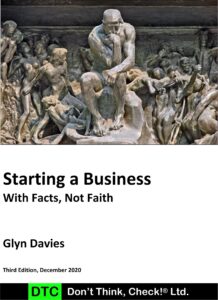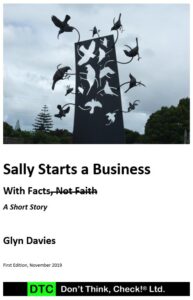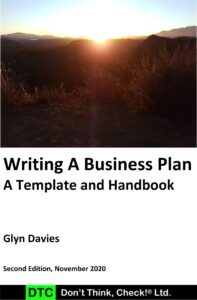

What is the One Biggest Problem Faced By Businesses?
I’ll provide the answer in a few lines, but first I apologise for using a manipulative technique (that I disdain) to get your attention – the numbered list. There are seemingly endless hoards of well-meaning consultants (and others) providing palliative lists for the business person. Everyone it would seem wants their most intractable problems solved in a single bound – an incredible fantasy, but a collective obsession regardless.
There are many sources, especially on the internet providing definitive lists of business problems to solve, with the implication being that if you simply sort out those few items, your success is assured.
My first concern is that the vast majority of authors ignore the need for a viable and sustainable Business Model. This is like lists of instructions for caring for an elephant, where the instructions assume that your elephant is still alive. An extreme analogy perhaps, but in business you should never assume anything.
So the biggest problem faced by businesses is:
- You need a viable and sustainable Business Model; if you don’t, you don’t/won’t have a viable and sustainable business.
My second concern is that there is little if any consistency between such lists.
The disparate problem-lists remind me of the parable of the Blind Men and An Elephant, Wikipedia, accessed Mar 2021. In the parable, each of the blind men, who had never come across an elephant before, inspect a separate and different part of the elephant, such as a leg, trunk, or tusk. Following their individual inspections of different parts, each man confidently reports his conclusion that an elephant is, respectively, “like a trunk”, or “like a snake”, or “like a spear,” and so on.
The moral of the parable is that we tend to claim absolute truth and certainty based on limited subjective experience.
And we see the same behaviour from authors of those lists of problems faced by businesses, authors who are not acquainted with your business.
Why are the lists so different, is it because businesses are very different? I don’t think so, as businesses are structurally very similar. Every business needs a source of finance, something to sell, people to make it, and people to sell it …
It is more the case that the authors, as am I, are using the lists as a marketing device to flaunt their expertise and to maintain cognitive availability within their audience. But in their efforts to stand out, they simply make their lists different, not better. And in their efforts to be different, and not distinctive, they are missing the elephant in the room – you need at all times to provide a Solution to a need, that is, a Job To Be Done. If you are not providing a Solution to a need, then no amount of financial analysis, culture and diversity programmes, and growth planning, for example, are going to help. No amount of fettling is going to will life back into a dead elephant.
Put another way, before you skip The Foundational Details, are you or will you be providing, on a sustainable basis, something that customers value and will pay you for? And in so doing, will you be able to pay all of your bills, make a profit, and achieve your business objectives?
Let’s use another metaphor, this time a house, where the house represents your business. In this metaphor, the foundations of your house are your Business Model, the system that creates value for you and your customers through a Distinctive Value Proposition (DVP). If your business does not have a viable and sustainable Business Model, just as if a house does not have sound or any foundations, then you do not have a business or won’t have one for long.
But there’s another thing, the lists are also seemingly divorced from planning documents such as the Business Plan, the Strategic Plan, and the Operations Plan, as no one refers to them.
Summary:
Once you have established a viable and sustainable Business Model, then create a Business Plan so that you, your backers, and your staff know how the business is going to function. Depending on the level of detail the Business Plan contains regarding the business strategy, a separate Strategic Plan may be needed. Then, so that you don’t leave it all up to chance and fallible memories, in an iterative manner combining experience, planning, and experimenting, record in your Operations Plan what needs to happen when and where by whom to support the Business Model.
Comparing these documents, which are kept up to date as far as is practical, with reality will inform you what you need to focus on and what your business’s biggest problems are. You don’t need someone not intimately familiar with your Business Model and business providing unsolicited advice.
The link below is to a serious post with a sarcastic title – ‘The 3.141 Biggest Problems Faced By Small Businesses.’ From the title, you’ll get a sense of my disdain for articles that claim you can solve all of your problems if you follow some random’s five- or ten-point list. If there was congruence between various author’s lists, they could at least claim some measure of credibility to add to their optimism and or vivid imaginations.
https://www.dontthinkcheck.co.nz/blog/the-3-141-biggest-problems-faced-by-small-businesses/
#DontThinkCheck #BusinessResultant #StartMyBusiness #RunMyBusiness #BusinessSuccessThroughEvidence #SaveMyBusiness



